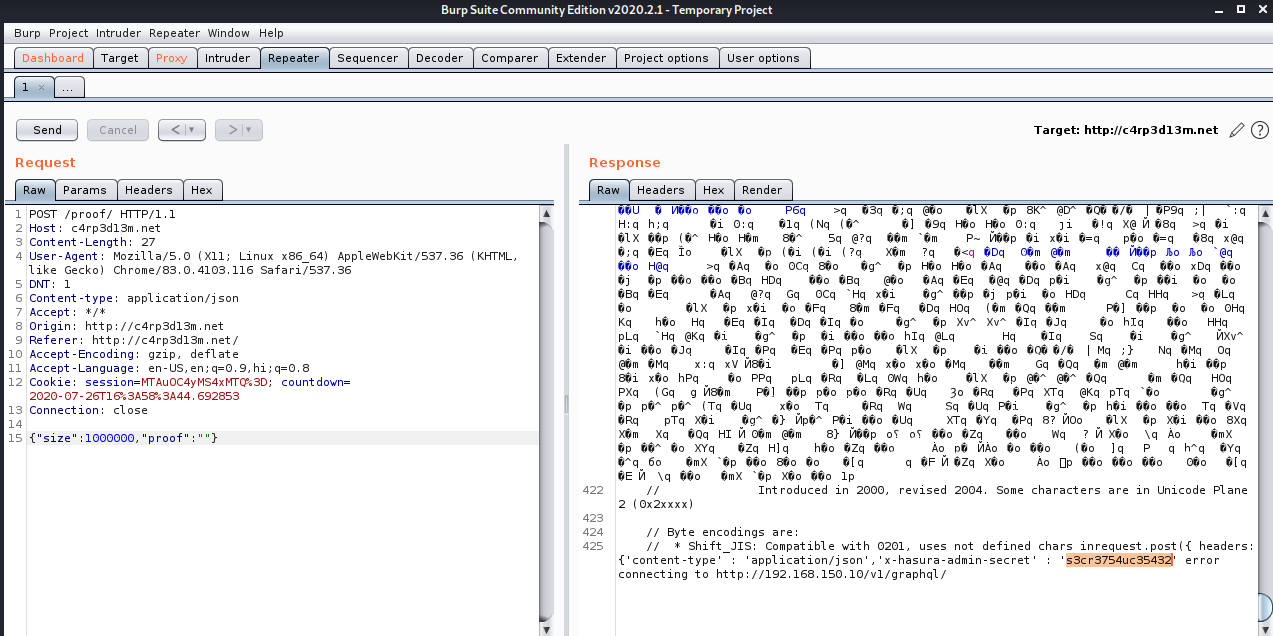
- #Base64 encoding size increase how to#
- #Base64 encoding size increase pdf#
- #Base64 encoding size increase update#
- #Base64 encoding size increase code#
The spring configuration below defines anĬlass using an injected cxf bus. When i run the wsdl2java process, jaxb regenerates the domain model and the statement element is now typed as a theĪttribute can be set to any valid mime type or a comma-separated list of mime types. Indicates that we are expecting the binary data to be of mime type application/pdf. Xmime:expectedcontenttypes="application/pdf"
#Base64 encoding size increase update#
You need to update the xsd with the expected mime content types. this is particularly useful when dealing with large volumes of binary data. Which allows the client application to stream the binary data if needs be. this can be improved by telling jaxb to use a Using a byte array for the statement element means that consumers will have to read the entire binary statement into memory in one go. When the wsdl2java process is run, jaxb generates a pojo with a statement instance variable of type byte array as shown below.
#Base64 encoding size increase pdf#
on line seven, a new base64binary typed statement element has been added to represent a pdf document.

Our sample soap service returns simple bank account data, represented by the account xsd type defined below.
#Base64 encoding size increase code#
the source code for this post includes a fully working mtom enabled cxf service and integration test. In the next few sections, i'll show you how mtom can be configured in a cxf service. a smaller xml payload also means less resource-intensive parsing by the consumer. The soap message is pretty lean, as we've avoided the base64 encoded bloat that we saw previously. the soap message contains a unique key used to reference the mime attachment. rather than base64 encoding binary data and embedding it in the soap body, the binary data is sent as a mime attachment.Īs shown in the diagram below, the binary data (a pdf in this case) is sent in the http request/response as a mime attachment. Message transmission optimisation protocol or mtom for short can be used efficiently handle binary data transmission via soap. a large binary object will result in a huge base64 encoded string, and more cpu intensive parsing for the consumer. Something else to consider is the overhead for the xml parsers that will consume the soap messages. for small amounts of binary data, this probably won't be an issue, but for larger volumes of data, the increased message size can significantly impact performance. when binary data is base64 encoded, it increases in size by approximately 30%. While this is a simple approach for dealing with binary data with soap, there are a few things to consider. However, its benefits are much more important, at least because all these symbols are. The only drawback is that the size of the result will increase to 33.

Yeah, that’s right, 64 characters is enough to encode any data of any length. Sending binary data with soap without mtom The Base64 Alphabet contains 64 basic ASCII characters which are used to encode data. the diagram below shows a sample soap message with binary data embedded as a base64 string. to achieve this, you can convert binary data to a base64 encoded string and simply embed the string inside the soap message.

if you want to include binary data in a soap message, it too must be text-based. Given that the formula in the above link is correct, and that the file size limit is 8192 KB in base64, the max attachment size would be: 6 150 000 B, as when this is encoded to base64 the new file size would be: 8 200 000 B.Soap is an xml-based protocol, which means that all data inside the soap envelope must be text-based. This link here where there is a formula for calculating the size of base64 encoded files - floor(size/3)x4.

Now, base64 encoded files seems to be bigger than "regular" files so found Researched some and I realized that attachments are base64-encoded in CRM. To me this seems like this it should be wasn't. We summed up the totalįile size on disk and it came to roughly 7MB, which is well under the limit. I changed the attachment file size limit to 8192 (which is the max supported limit ) and thought this would fix it.
#Base64 encoding size increase how to#
This is not a question on how to increase file size limit with supported or unsupported means, but a question on actual file size.Ī client had some problems tracking e-mails with large attachments.


 0 kommentar(er)
0 kommentar(er)
